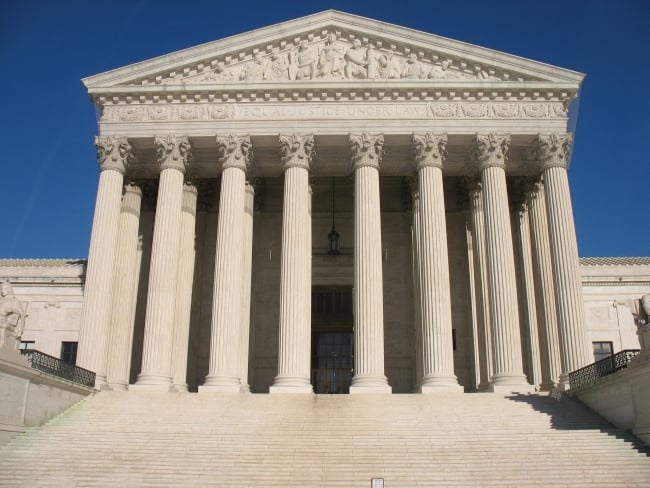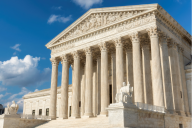You have /5 articles left.
Sign up for a free account or log in.

Photo by Kjetil Ree, CC BY-SA 3.0, via Wikimedia Commons
Last Thursday, while providing a federal policy update to an audience of campus attorneys at the National Association of College and University Attorneys annual meeting, I was asked what I thought would happen if the Supreme Court overturned its decades-old Chevron doctrine (as it was widely expected to do). My initial answer was just one word: chaos.
The very next morning, the Supreme Court did indeed part ways with its 1984 precedent in Chevron v. NRDC. If you haven’t been following this issue, or the underlying cases (known as Loper Bright Enterprises vs. Raimondo and Relentless Inc. vs. Department of Commerce), then you’re in good company—those cases dealt with an obscure area of federal regulations requiring fishing companies to pay for federally mandated monitors on their vessels.
But now, it is time for all of higher education to pay close attention. Many of the rules of the road that we must follow in American higher education have been laid out by the Department of Education, the Department of Labor and other federal agencies in regulations and subregulatory guidance. Bluntly stated, the ruling last Friday will fundamentally reshape what happens on campuses, dramatically shifting the balance of power away from the federal government’s executive branch and toward the judicial branch.
Forty years ago, the Supreme Court in a case between an environmental advocacy group and the oil company Chevron ruled that when a law passed by Congress is unclear or has ambiguity, courts should defer to the interpretation of the federal agency tasked with implementing the law. The Chevron ruling was what allowed the Department of Education to map onto the mere 37 words at the core of the Title IX of the Education Amendments of 1972 a range of “education program and activity” requirements—affecting everything from ball fields to bathrooms to campus sexual harassment investigations.
It’s not just Title IX. In the absence of Chevron deference, regulations like the new financial value transparency and gainful employment package, which took effect Monday and which relies at its root on one line in the Higher Education Act referencing programs that “prepare students for gainful employment,” look precarious at best. Recent and pending regulations, like those on state authorization or website accessibility, will face new, heightened scrutiny. In fact, we have already seen the leading Republican on the Senate’s Health, Education, Labor and Pensions Committee write to the secretary of education asking how the Department of Education intends to change course on Title IX and various loan repayment and forgiveness proposals in the wake of Loper Bright.
The higher education impact mirrors the enormous practical implication of the Loper Bright decision across the federal government. At the end of 2021, the Federal Register (containing all published federal regulations) was 188,343 pages long, a number that is surely higher now. And the laws underpinning all those thousands of pages of regulations are often very ambiguous. This is both by design and necessity. No lawmaker can anticipate the enormous variety of circumstances that may occur. Allowing for some flexibility is a reasonable way to ensure that laws, and their resulting regulations, continue to be relevant well after passage. What’s more, leaving large gray areas in legislative text serves a practical purpose: Congress historically struggles to find the kinds of broad agreement necessary to enact laws, a condition that’s only worsened in recent years. For decades now, Congress has dealt with that by writing legislation with greater and greater amounts of ambiguity, trusting the agencies (and their staffs of specialized content experts) to resolve those gray areas in ways that meet the priorities of differing administrations.
Chief Justice John Roberts summed up the crux of the court’s resetting of the new order by saying that “perhaps most fundamentally, Chevron’s presumption is misguided because agencies have no special competence in resolving statutory ambiguities. Courts do.” More than one observer, including Justice Elena Kagan in the minority dissent, have described this ruling as a power grab by the courts. The decision, in Kagan’s words, means that “in one fell swoop, the majority today gives itself exclusive power over every open issue—no matter how expertise-driven or policy-laden—involving the meaning of regulatory law.”
In doing so, the Supreme Court overturned 40 years of precedent and thousands of judicial decisions that relied on Chevron. It also created an environment where those ambiguities can only be resolved in two ways. The first relies on Congress drafting laws with greater clarity and specificity, thus removing any ambiguity in the first place. Don’t hold your breath. In the last 50 years, the least effective Congress at passing laws was the 112th Congress (2011–13), which only succeeded in passing 284 bills into law. As if to mock that record of ineffectiveness, the current Congress has, as we enter July, only passed 65 bills into law. The idea that this Congress or any of its successors will become models of efficient, detail-oriented legislative action is sadly laughable.
Which leaves the second option—rulings by the courts. Hold on to your hats. Within hours of the high court’s ruling, a district court in Texas issued an injunction blocking the Department of Labor’s new rule increasing the threshold for overtime pay, which will have a massive impact on colleges and universities and that was scheduled to take effect yesterday, on the basis of the Loper Bright ruling. This was no doubt just the first in a resulting surge in cases before the courts that will tax their ability to meet the demand, further slowing a process that mostly moves at a deliberative pace measured in years, not days.
All that means rampant uncertainty. For decades, Chevron deference gave agencies carte blanche to issue regulations with a fair degree of confidence that they would be upheld by courts. This did not always serve regulated parties like colleges and universities well, but at least they could look at federal regulations and guidance and know what the agencies expected of them. Almost every aspect of running a modern campus is dictated in some way by federal regulations or guidance—whether that’s how you make staffing, compensation, training or enrollment decisions all the way down to the level of what you put on your website. It can be burdensome or contradictory and in some cases nonsensical, but mostly it was “the law.”
No more. In the absence of a single, consistent federal interpretation of a law, institutions will have to more closely track judicial developments on multiple levels, and sometimes in multiple judicial districts, to stay current on which portions of which regulations remain applicable to them and guestimate which ones are likely to be cast aside in this post-Chevron era. The concept of certainty will disappear, and the norm will become a series of constantly shifting, ever-tenuous requirements that hold only until the next court action.
In short, chaos.








